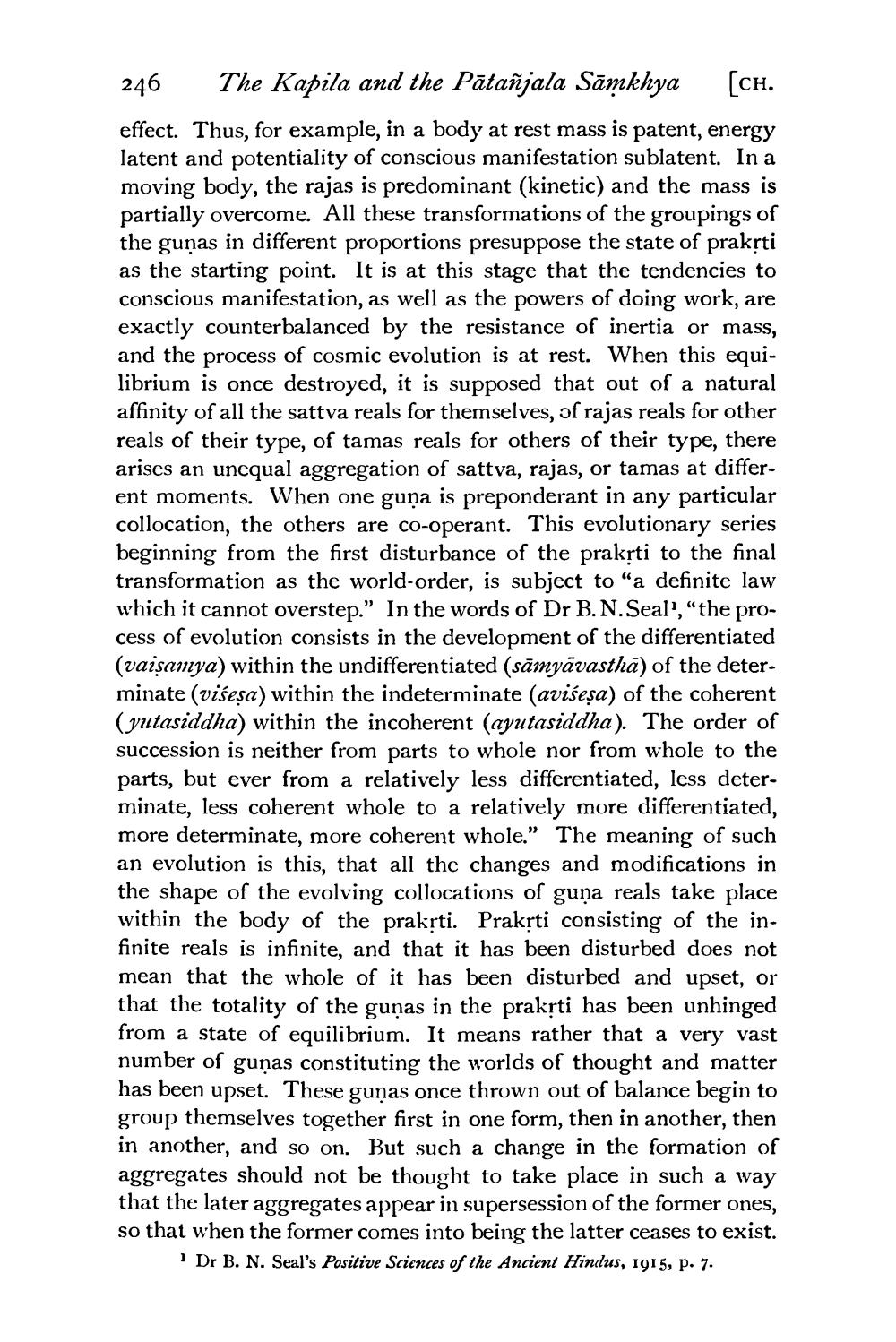________________
246 The Kapila and the Pātañjala Sāmkhya [ch. effect. Thus, for example, in a body at rest mass is patent, energy latent and potentiality of conscious manifestation sublatent. In a moving body, the rajas is predominant (kinetic) and the mass is partially overcome. All these transformations of the groupings of the guņas in different proportions presuppose the state of praksti as the starting point. It is at this stage that the tendencies to conscious manifestation, as well as the powers of doing work, are exactly counterbalanced by the resistance of inertia or mass, and the process of cosmic evolution is at rest. When this equilibrium is once destroyed, it is supposed that out of a natural affinity of all the sattva reals for themselves, of rajas reals for other reals of their type, of tamas reals for others of their type, there arises an unequal aggregation of sattva, rajas, or tamas at different moments. When one guna is preponderant in any particular collocation, the others are co-operant. This evolutionary series beginning from the first disturbance of the prakrti to the final transformation as the world-order, is subject to "a definite law which it cannot overstep." In the words of Dr B.N.Seal', “the process of evolution consists in the development of the differentiated (vaişamya) within the undifferentiated (sāmyāvasthā) of the determinate (visesa) within the indeterminate (aviseșa) of the coherent (yutasiddha) within the incoherent (ayutasiddha). The order of succession is neither from parts to whole nor from whole to the parts, but ever from a relatively less differentiated, less determinate, less coherent whole to a relatively more differentiated, more determinate, more coherent whole." The meaning of such an evolution is this, that all the changes and modifications in the shape of the evolving collocations of guņa reals take place within the body of the prakrti. Prakrti consisting of the infinite reals is infinite, and that it has been disturbed does not mean that the whole of it has been disturbed and upset, or that the totality of the gunas in the prakrti has been unhinged from a state of equilibrium. It means rather that a very vast number of guņas constituting the worlds of thought and matter has been upset. These gunas once thrown out of balance begin to group themselves together first in one form, then in another, then in another, and so on. But such a change in the formation of aggregates should not be thought to take place in such a way that the later aggregates appear in supersession of the former ones, so that when the former comes into being the latter ceases to exist.
i Dr B. N. Seal's Positive Sciences of the Ancient Hindus, 1915, p. 7.




